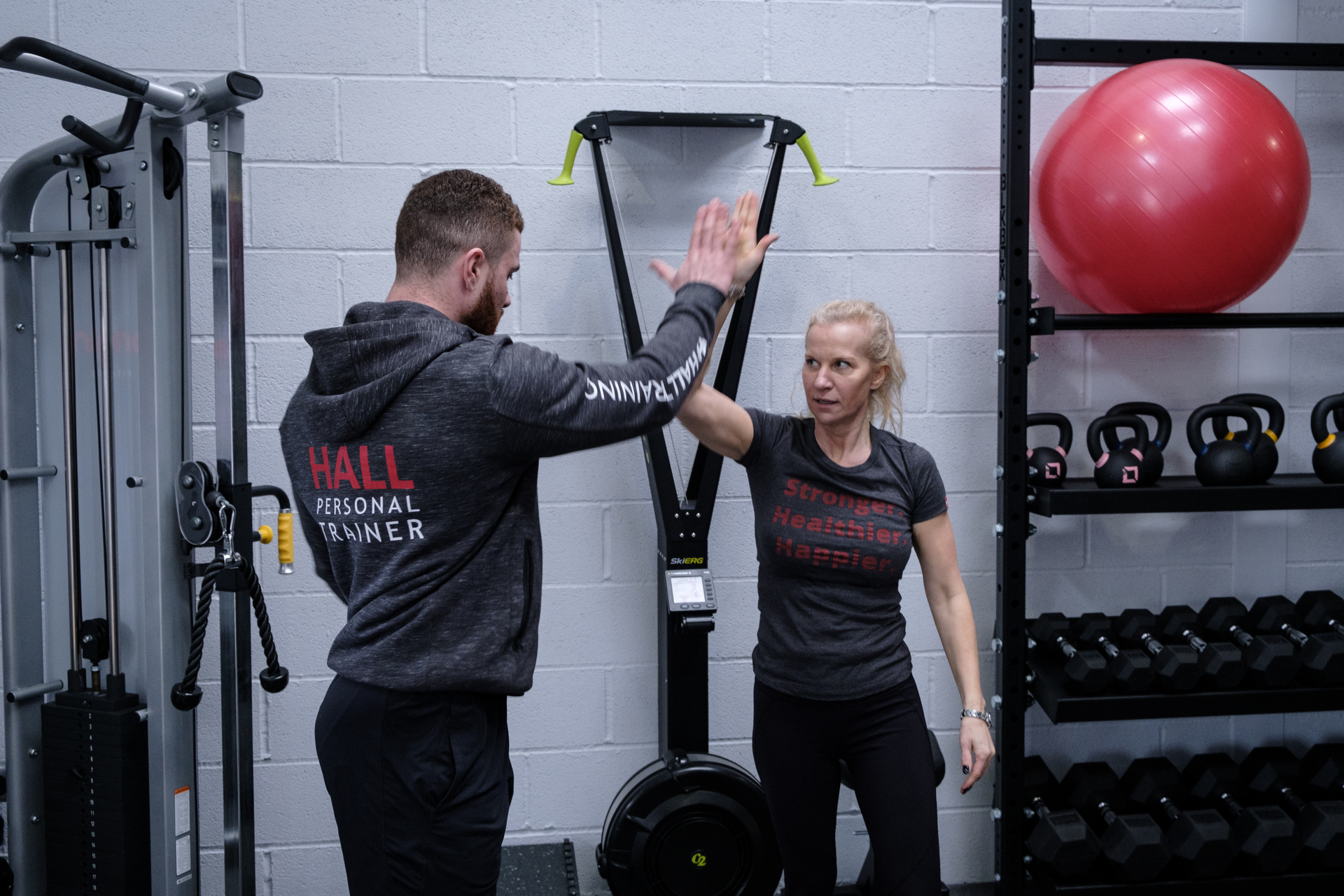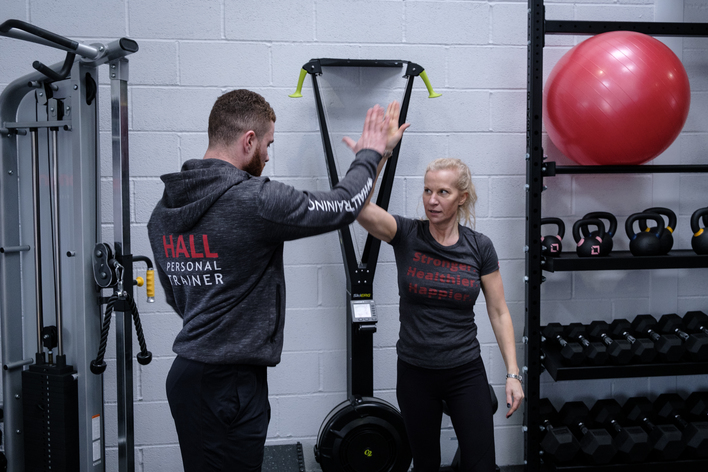80% Quit the Gym Within a Year - Here's How to Be the 20%
It's that time of the year, where the New Year sparks a wave of fitness resolutions and new gym sign ups, with January seeing gym memberships rise by nearly
12% across the UK. Additionally,
ukactive emphasises that January is the busiest month for gyms, with attendance spiking by 28% compared to December. However,
research shows that
50% of these new members stop attending within six months, with many giving up as early as February or March and 80% of people cancelling their membership within the first year! Why is this trend so common, and how can you ensure that your fitness journey doesn’t end up as another New Year’s cliché?
Why Gym Dropout Rates Are So High
1. Unrealistic Expectations
Many people set ambitious goals - like losing a stone in a month or running a marathon by spring - without considering what’s realistic for their current fitness level or lifestyle. When results don’t come quickly, disappointment sets in, and motivation wanes. Without a clear plan, the initial excitement quickly gives way to frustration.
2. Lack of a Plan or Guidance
Walking into a gym without a structured plan can feel overwhelming, especially for beginners. With no clear direction, it’s hard to see progress, making workouts feel like a chore rather than a step toward your goals.
3. Loss of Motivation
According to
PureGym, initial enthusiasm often fizzles out as life returns to normal after the holidays. The initial excitement of a New Year’s resolution often fades by February or March, especially without external accountability or visible progress to keep you going. Many cite fatigue, work schedules, or lack of time as reasons for dropping out.
4. Gym Intimidation
For some, gyms can feel intimidating, especially when surrounded by seasoned gym-goers or unfamiliar equipment. This discomfort can make it harder to stick to a routine that can prevent people from returning consistently.
5. Busy Schedules
As work and personal commitments pick up after the festive season, gym sessions tend to fall down the priority list. Industry insights show that time constraints and tiredness are major reasons why people give up, with
41% of us choosing to flop on the coach at home rather than head to the gym as we feel too tired to exercise after work.
6. Financial Constraints
January enthusiasm often leads to costly memberships, but as motivation decreases, the financial commitment can feel unjustifiable. The cost of memberships is a key factor, particularly during times of economic uncertainty.
Research reveals that 54% of people who don’t join gyms cite affordability as the main reason - this often comes down to a mindset shift and a matter of priorities.
7. Injury or Burnout
Jumping into high-intensity workouts too quickly can lead to injuries or exhaustion, making it harder to maintain a regular routine.
8. Boredom or Lack of Variety
Several
studies suggest that monotonous workouts or a lack of variety in exercise routines can significantly affect motivation and adherence to exericse, making it less appealing to keep showing up week after week. Not having a well-structured programme, knowledge around what to do or, the necessary accountability can make it all too easy to throw in the towel.
How to Avoid Becoming a Dropout Statistic
The key to long-term fitness success lies in realistic expectations, structured programmes, and consistent accountability to help with that all-important motivation. Here are some strategies:
1. Start with Realistic Goals
Break big goals into smaller, achievable steps. Instead of aiming to lose 10kg in two months, focus on building habits like attending 2–3 sessions per week or increasing your strength gradually.
2. Seek Professional Guidance
A personal trainer or structured programme can make all the difference. For example, we offer personalised small group personal training and one-on-one nutrition reviews, ensuring members feel confident and supported every step of the way.
3. Make It Social
Training with others or joining small group sessions can make exercise more enjoyable and help you stay accountable.
4. Prioritise Variety
If you want exercise to stick, it must be fun! Mix up your workouts with a combination of strength training, cardio, and flexibility exercises to keep things interesting and engaging.
5. Choose a Welcoming Gym
Look for facilities that make you feel comfortable, especially if you're new to fitness. Hall Personal Training prides itself on providing a non-intimidating and inclusive environment.
Local Gyms in Oxfordshire to Consider
If you’re looking for the right fit to keep you on track, here are a few local gyms in and around Oxfordshire:
- Hall Personal Training - (Kidlington, Oxford & Deddington, Banbury)
Specialising in small group training and 1-on-1 personal training, with a focus on tailored fitness and nutrition plans. Hall Personal Training offers a non-intimidating environment where clients see real progress.
- BEAT Fitness - (The Hatchery, Middle Aston)
Beat Fitness is a gym located in the Oxfordshire area, offering a variety of large group classes. Their focus is on inclusive fitness, catering to diverse needs with classes such as non-contact boxing, circuit training, and strength programs.
- David Llyod - Oxfordshire Health & Racquets Club (Oxford Business Park)
Located in Oxford, this facility combines fitness with luxury, including spa amenities, a crèche, and a variety of classes.
- The Athlete Centre - (Horspath, Cowley)
Perfect for those who enjoy functional fitness, The Athlete Centre specialises in strength training and CrossFit.
- The Gym Group - (Oxford)
For those seeking affordability and 24/7 access, this no-frills gym is a good option. However, beginners might need to invest in external guidance for a structured program.
Breaking the Cycle. Making Your Fitness Journey Last
Starting strong in January is a great first step, but lasting results come from building sustainable habits. We focus on helping you make exercise an integral part of your everyday routine through personalised programmes and consistent support.
With an average member retention rate of 22 months, we’re proud to say we know what works. By offering realistic goal-setting, tailored training plans, and expert guidance, we ensure our members not only stick with their fitness journey but also enjoy the process.
If you’re ready to make fitness a long-term part of your life, we’re here to help you every step of the way!
Let’s make 2025 the year you stick to your goals -
get in touch with us today to learn more about our programmes!



